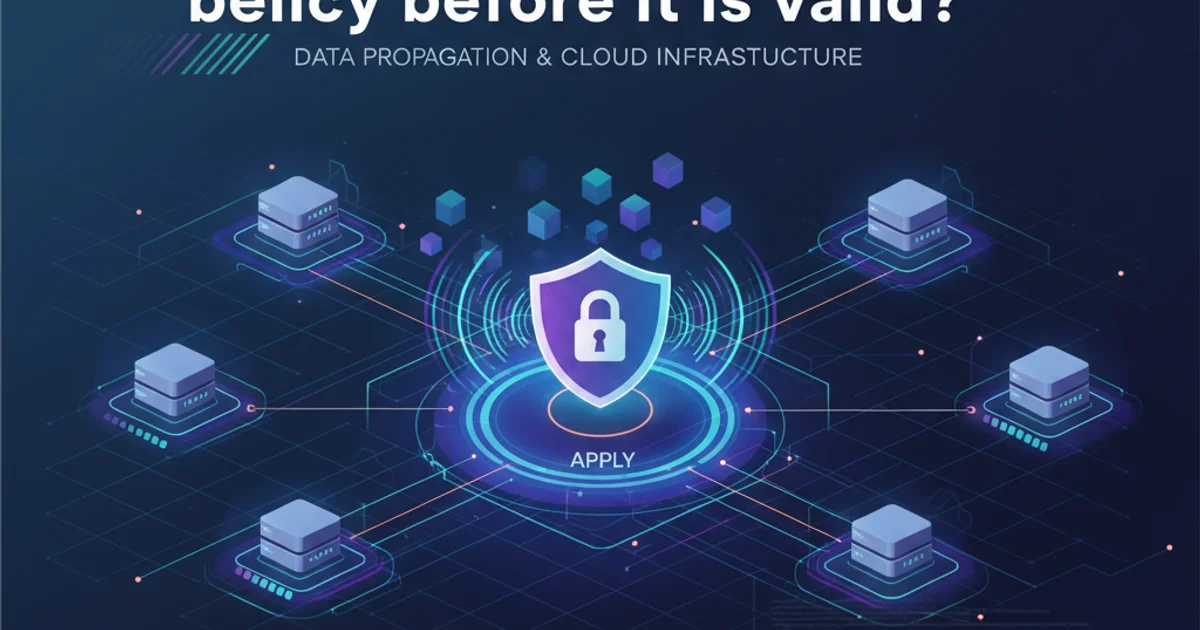How long should I wait after applying an AWS IAM policy before it is valid?
Categories:
Understanding AWS IAM Policy Propagation Delays

Explore the propagation times for AWS IAM policies, common factors influencing delays, and best practices for managing permissions effectively in your AWS environment.
When you apply an AWS Identity and Access Management (IAM) policy, whether it's an inline policy, a managed policy, or a permissions boundary, you might notice that the changes aren't immediately effective. This delay is due to a concept known as eventual consistency, a fundamental characteristic of distributed systems like AWS. Understanding how long you should wait and the factors influencing this delay is crucial for effective AWS resource management and security.
What is Eventual Consistency in AWS IAM?
AWS IAM is a globally distributed service designed for high availability and scalability. To achieve this, changes made to IAM policies are not instantly replicated across all AWS regions and availability zones. Instead, they are propagated asynchronously. This model is known as eventual consistency, meaning that while the changes will eventually be consistent everywhere, there might be a short period where different parts of the system reflect different states.
For IAM, this means that after you create, update, or delete a policy, or attach/detach it from an identity (user, group, role), it takes some time for these changes to propagate across all the underlying services and data stores. During this propagation window, a user or service might temporarily have access based on the old policy, or lack access based on the new policy, until the update reaches the specific endpoint or service attempting the action.
flowchart TD
A[IAM Policy Update Initiated] --> B{IAM Control Plane}
B --> C[Global Replication Service]
C --> D[Regional IAM Endpoints]
D --> E[AWS Services (e.g., S3, EC2)]
E --> F{Policy Effective?}
F -- No --> G[Wait for Propagation]
F -- Yes --> H[Action Allowed]Simplified flow of AWS IAM policy propagation
Typical Propagation Times and Factors Influencing Delays
AWS generally states that IAM policy changes can take a few minutes to propagate globally. While often much faster, especially for simple updates, it's not uncommon to observe delays of up to 5-10 minutes in some scenarios. In rare cases, particularly during periods of high load or service disruptions, it could extend further.
Several factors can influence the actual propagation time:
- Type of Change: Creating a new policy or attaching an existing one might propagate faster than complex updates to an existing policy that is widely used.
- Scope of Change: Changes to AWS managed policies, which are used by many accounts, might have different propagation characteristics than customer-managed policies.
- AWS Region: While IAM is global, the speed at which changes are reflected in specific regional services can vary.
- Service Interaction: Different AWS services might cache IAM permissions for varying durations, leading to perceived delays even after the IAM service itself has propagated the change.
- API Calls vs. Console: While both eventually use the same backend, the console might sometimes reflect changes slightly differently or with a minor delay compared to direct API calls.
It's important to note that AWS does not provide a guaranteed Service Level Agreement (SLA) for IAM policy propagation times, as it's an eventually consistent system.
Best Practices for Managing IAM Policy Propagation
Given the nature of eventual consistency, here are some best practices to minimize the impact of propagation delays:
- Plan Changes During Off-Peak Hours: For critical permission changes, especially those that might disrupt operations, schedule them during periods of low activity.
- Test Thoroughly: Before deploying significant policy changes to production, test them in a staging environment. This helps you understand the typical propagation behavior for your specific use cases.
- Implement Least Privilege Early: Design your IAM policies with the principle of least privilege from the start. This reduces the need for frequent, large-scale permission adjustments that could be impacted by propagation delays.
- Use AWS CloudTrail and Access Analyzer: Monitor CloudTrail logs for
AccessDeniederrors to identify if a policy change hasn't propagated yet. AWS Access Analyzer can help you review and refine policies proactively. - Avoid Rapid, Consecutive Changes: If you need to make multiple changes to the same policy or principal, try to batch them or introduce small pauses between updates to allow for propagation.
- Verify with
aws sts get-caller-identity: For programmatic checks, you can useaws sts get-caller-identityto confirm the identity and then attempt a low-impact action to verify permissions, rather than relying solely on the policy update command's success.
# Example: Attaching a policy and then waiting before attempting an action
aws iam attach-user-policy --user-name MyUser --policy-arn arn:aws:iam::123456789012:policy/MyNewPolicy
echo "Policy attached. Waiting for propagation..."
sleep 300 # Wait for 5 minutes
aws s3 ls s3://my-bucket/ # Attempt an action that requires the new policy
Bash script demonstrating a wait period after attaching an IAM policy.